St. Zephyrinus (199-217) 16th Pope
He consolidated the pontifical supremacy over the bishops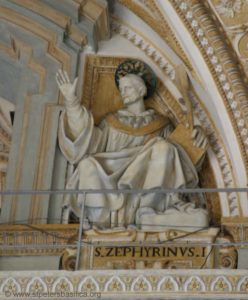
He renewed the discipline of the Church toward adultery and immorality
Masses were said on top of the tombs. This started the practice of placing saints’s relics into altars.
Bitter arguments over the relationship between the human and divine nature of Jesus appear
The Church’s first formal schism appears
Some Christians believed that Jesus became man, not God.(Monarchianism)
Some Christians believed that it was the Father who died on the cross (Modalism)
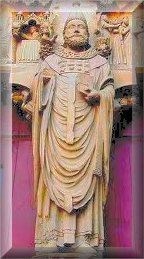
St. Callixtus (217-22) 17th Pope
He was a slave who suffered for his faith
There were large numbers of Christians throughout all the cities of the empire
In Rome Christianity appealed to the highest and lowest classes
Previously, it had been custom to exclude sacraments from any Christian who committed adultery and fornication
In order to adapt to growing Christianity, He decreed that those guilty of sexual crimes might return to the sacraments after due penance.
He ruled that early baptism was preferable
He claimed altering this custom fell under the binding and loosing authority given to Peter and his successors
He declared that within the Church that slave and free were equal
He declared that the laws of the Church regarding marriage take precedence over laws of the state
He was responsible for the excavation of the catacombs on the Via Appia
His opposition lead to the creation of the first anti-pope, Hippolytus
St. Urban I (222-230) 18th Pope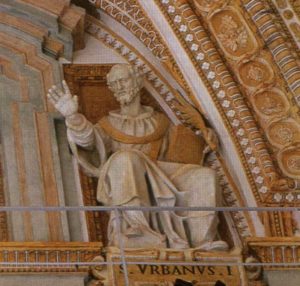
He consented to the acquisition of property by the Church
He ordered that chalices and patens were to be made of gold and silver
Because of persecutions, Christians began to gather in the catacombs for the Liturgy
St. Pontian (230-235) 19th Pope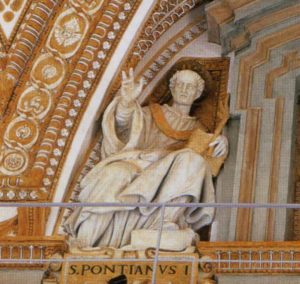
He ordered chanting of the Psalms
He convened a synod condemning that heresy that all men (including the devil) will eventually be reconciled with God (Origenism)
St. Anterus (235-236) 20th Pope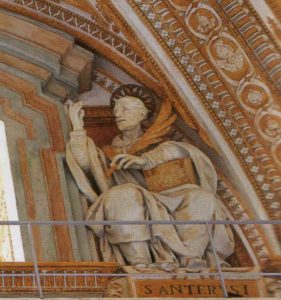
He wrote many epistles promoting tightening hierarchical relationships with the Church during the growing persecution
He ordered that the acts and relics of the martyrs be stored in churches
Some Christians followed a deterministic and dualistic Gnostic belief that the soul is good, but that matter is evil (Manicheanism)
St. Fabian (236-250) 21st Pope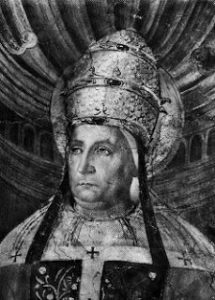
He reorganized the local clergy into diaconates for the administration of social welfare.
He was responsible for founding several churches in Gaul
He originated the consecration of holy oils on Holy Thursday
Upon his election of pope, a dove landed on his head
The persecution in Rome gave rise to the hermetical life of the anchorites.
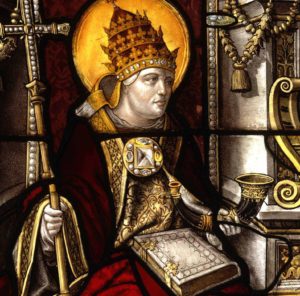
St. Cornelius (251-253) 22nd Pope
The fierce persecution of the Church prevented the election of a new pope after St. Fabian for 16 months
Novation, the second anti-pope, was elected
Novation introduced the heresy that those guilty of grave sins were permanently excluded and prevented from receiving absolution from the Church (Novationism)
Some Christians became lapsi by renouncing their faith. These lapsi offered incense to the gods or emperor, and turned over their bible to the Roman authorities.(traditores)
Cornelius convened a synod to deal with these lapsi who wished to return to the Church
The lapsi could rejoin the Church after a severe penance. Lapsi priests and bisho
p would lose their priestly authority
St. Lucius (253-254) 23rd Pope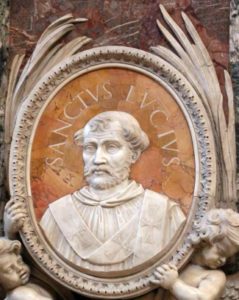
He declared those who stole Church
assets to excommunicated.
He continued the policies of St. Cornelius toward the Lapsi
St. Stephen I (254-257) 24th Pope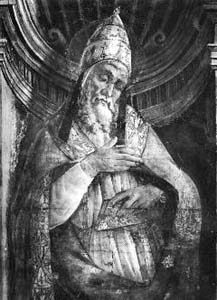
The main event of this pontificate was the dispute of the re-baptized
He reasserted the traditional Roman Catholic teaching that baptism, done in the Trinitarian formula, is valid
He ordered that vestments used at Mass could not be worn as everyday wear
St. Sixtus II (257-258) 25th Pope
For fear of imperial confiscation, He ordered the remaining Church treasures to be distributed among the poor
St. Dionysius (Denis) (259-268) 26th Pope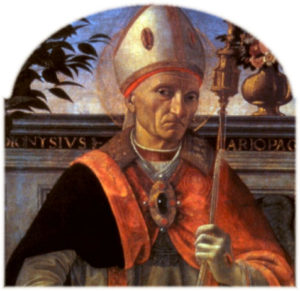
The new emperor issued an edict of toleration, giving the Church its legal existence
The churches and cemeteries were restored to Catholic ownership
He reorganized the parishes in Rome that were disrupted during the persecution
He was elected a year after his successor because of the persecution
St. Felix I (269-274) 27th Pope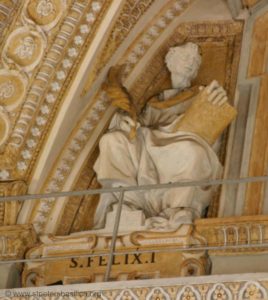
He began the practice of burying martyrs under church altars
He ordered that Masses should be celebrated on the tombs of the martyrs
He asserted the divinity and humanity of Jesus
He asserted the two natures, divinity and humanity, in one person
Some Christians believed that Jesus was merely a man, but had acted as the Temple of the Holy Spirit, in whom the Divine Word dwelt through its operation.
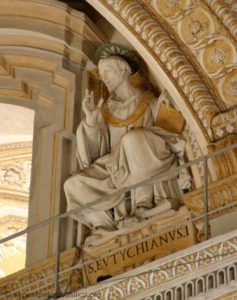
St. Eutychian (275-283) 28th Pope
Manicheanism spread throughout the empire, becoming very powerful, arousing great concern
He instituted blessing of the crops
He ordered that martyrs be covered with a Dalmatic, a cloak worn by the Roman emperors.
The Dalmatic is a sacred vestment worn by the deacon at solemn religious functions
St. Caius (283-296) 29th Pope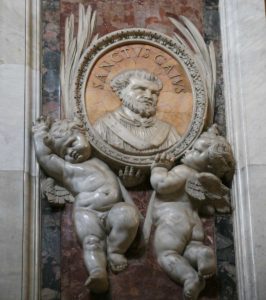
He was the grandson of the emperor
He ordered that all bishops must through several degrees of the clergy
The bloodiest persecution of Diocletian occurs
St. Marcellinus ( 296-304) 30th Pope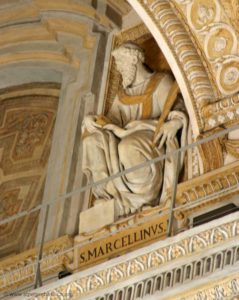
He was lenient toward the lapsi, which angered the Donatists and Novationists

Best air max , you will finde ever !
Hi YesBet88 Thanks for your response. Not sure what you mean by best air max. Can you please let me know.